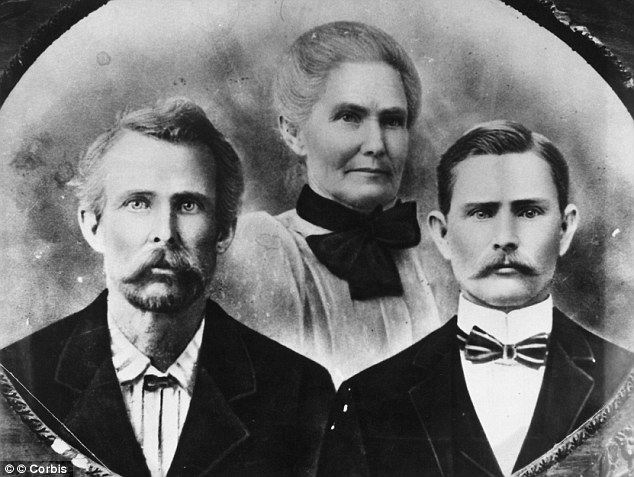OLD GLORY
William Driver was born in Salem Massachusetts on March 17, 1803 and died in Nashville on March 3, 1886. Driver is buried in Nashville's City Cemetery. He probably has the most interesting tombstone in the cemetery. Driver was given a huge American flag on his birthday in 1831. He was a ship captain and as he unfurled his flag in the breeze the sight of it drove him to exclaim "Oh Glory". Thus the nickname for our flag. As a sea captain he once transported the descendants of the Bounty mutineers from Pitcairn Island to Tahiti. The move was in order to escape an epidemic that was sweeping the island. Driver retired from the sea in 1837 and moved to Nashville to be near relatives. I saw his home in Salem Massachusetts when we visited there a few summers ago. The tour guide was surprised that I knew the story of William Driver. This gave me the opportunity to educate him about Drivers life in Nashville.
At the outbreak of the Civil War Drivers loyalty to the Union was well known and established and he hid his flag in a quilt. Confederates were constantly searching his house looking for his flag but to no avail. Nashville fell to Union forces on February 25, 1862. The Yankee's raised a small American flag over the State Capital. That is until someone suggested using Captain Driver's "Old Glory". With pomp and ceremony his flag replaced the smaller flag. The following is an account of the flag raising. “A stout, middle-aged man, with hair well shot with gray, short in stature, broad in shoulder, and with a roll in his gait, came forward and asked, ‘Who is the General in command? I wish to see him.’” Driver briefly conferred with the six foot tall general—who himself had formerly been a Navy man—and, “when satisfied that Gen. Nelson was the officer in command, he pulled out his jack-knife and began to rip open the bed quilt without another word. We were puzzled to think what his conduct meant….the bed quilt was safely delivered of a large American flag, which he handed to Gen. Nelson, saying, ‘This is the flag I hope to see hoisted on that flagstaff in place of the damned Confederate flag set there by that damned rebel governor, Isham G. Harris. I have had hard work to save it; my house has been searched for it more than once.’ He spoke triumphantly, with tears in his eyes.” "
Old Glory" was a huge success and it was what the military calls a garrison flag. I was struck by it's size when I saw it on display at the American History Museum at the Smithsonian. This was when I was a chaperon for my granddaughter Courtney's 4th grade class in 1996. As an old man he told his sons in 1876 "This flag has ever since been my staunch companion and protector. Savages and heathen, lowly and oppressed hailed and welcomed it at the far ends of the world. Then, why should it not be called Old Glory?" Just before his death he gave "Old Glory" to his daughter with these words. "Mary Jane, this is my ship's flag, Old Glory. It has been my constant companion. I love it as a mother loves her child. Cherish it as I have cherished it"
The following information on William Driver is from a Tennessean article dated May 4, 2007.
Driver became a junior warden in Nashville's Christ Church, Episcopal, where he had married his 15-year-old second wife soon after he arrived in Nashville in 1837. He was 34 at the time and left with three small children after his first wife died in their native Salem, Mass. The Nashville marriage produced nine more children.
Some residents of the Fiji Islands claim descent from Driver and his unofficial union with an island chieftain's daughter during Driver's seafaring years of shipping cargo in the South Pacific. One of them, Rodney Acraman, brought the story to Nashville on a visit here in 1968.
Driver helped another man remove coins and minerals belonging to the Tennessee Historical Society from display in the state Capitol library for safekeeping after the Union Army arrived in the city during the Civil War. The artifacts were entrusted to the widow of President James K. Polk, who kept them at her house nearby until after the war.
Driver's 1831 ship's log in his own handwriting is preserved at the Tennessee State Library and Archives. It details his Jan. 13 departure from Massachusetts, close calls with wintry gales and his later rescue from Tahiti of the Pitcairn islanders.
A mantel said to have come from Driver's house, once located at 511 Fifth Ave. S. near the present Nashville Rescue Mission, is now in an early 20th-century home at 3610 Caldwell Court. Someone, possibly even Driver himself, wrote in pencil a phrase from the national anthem on its poplar front – something discovered beneath paint by the home's owners in 1976.
 |
| A young Captain Driver |
 |
| Driver's ship flying Old Glory |
 |
| Driver when he lived in Nashville |
.jpg) |
| William Driver's Home In Salem |
.jpg) |
| Captain Driver's House In Nashville - It no longer exists |
 |
| Tennessee State Capital during the Civil War |
 |
| Old Glory |
 |
| Restoring Old Glory |
 |
| Entrance to City Cemetery |
 |
| Grave of William Driver |
Three generations of Capt. William Driver's descendants from Elkhart, Ind., pose for a family photo at Driver's grave in Nashville's City Cemetery in 1963. Mrs. Stanley DeMusey's camera records her two daughters and three grandchildren at the monument Driver designed. It features an anchor resting against a tree trunk. / FILE / TENNESSEAN





Comments
Post a Comment